Wedding: features, rules and history of the ceremony
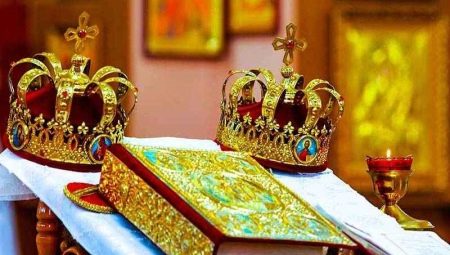
A wedding is a very serious step and a great sacrament in the life of a couple of loving people. Not many people decide to get married, because this process holds the hearts and destinies of two people together, not only on earth, but also in heaven.
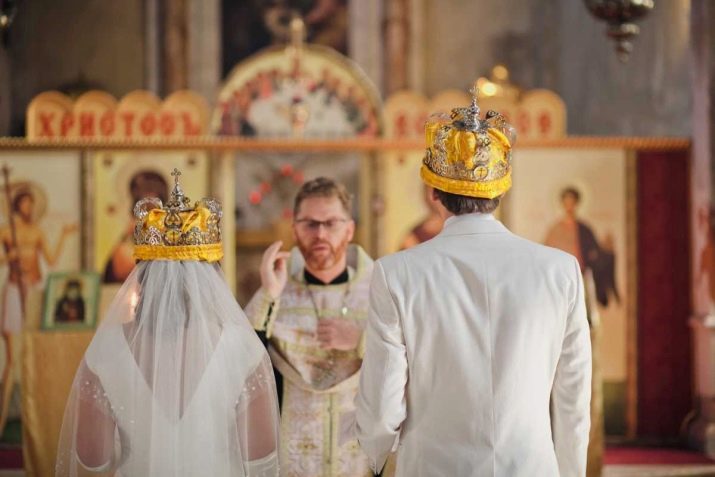
What it is?
A wedding is a church ceremony that takes place on or after the wedding, a few years later. A wedding means that God blesses a man and a woman for a peaceful life in love and understanding. The meaning of the name of the ritual is that crowns are placed on the heads of the spouses, which are made of metal, often of precious stones.
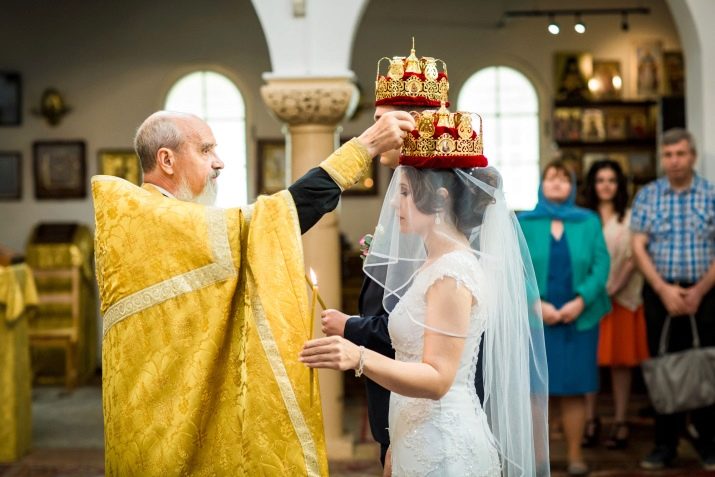
It must be said that the wedding ceremony cannot be performed if the young do not have a marriage certificate, which was officially registered at the registry office.
The meaning of a wedding for the Orthodox is to receive the blessing of the Lordas well as his protection for his family. The wedding should not be considered a formality. Also, it should not be some kind of pretentious event, the purpose of which is only one - to attract more eyes to your solemn event.
Every couple must know that they are not marrying for show or for others. From this it follows that they are getting married only for themselves. Therefore, before going to church, you need to think carefully and weigh everything: is the wedding ceremony necessary for these two people, and are they ready to go through their whole life hand in hand.

Such questions sometimes put young people in a stupor, and this can only mean one thing - you should never rush. That is why many priests say that there is no pathos and solemnity in middle-aged people who came to church for a blessing for marriage.In them there is only grace and acceptance of the fact that church marriage will make them even closer and more honest in relation to each other.
The wedding is held only for Orthodox, baptized men and women. If they are not baptized, the wedding should be postponed. To begin with, the priest advises to come to God through the rite of baptism and only then think about whether a person chooses this particular woman or this man for the rest of his life. It must be remembered that a wedding ceremony is a union of people forever, and the reverse procedure, unlike a divorce in a registry office, is no longer so easy to carry out. Not every priest will do this.
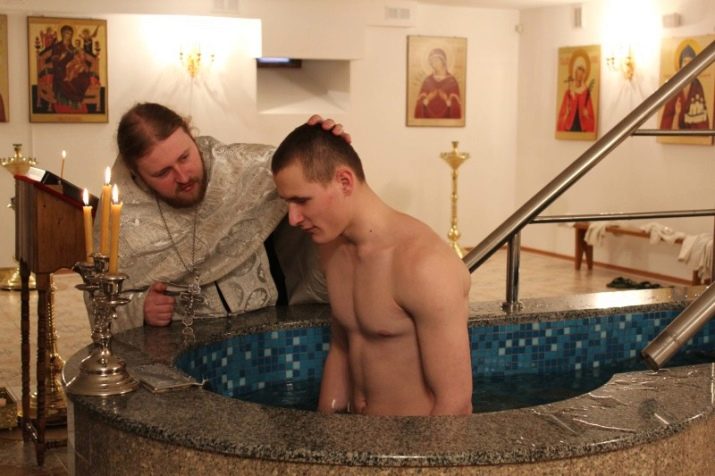
It is believed that the later the wedding ceremony is held, the more conscious this step is. Therefore, you should not rush into such a serious decision, and get married immediately on your wedding day with a person who is not always as familiar as you would like. After all, the real shortcomings in most cases are revealed after marriage.
But if the young people definitely decided to get married, then the possibility of holding the ceremony is determined not only by the couple, but also by the church, and it has a number of prohibitions. Wedding is prohibited in the following cases:
- the young or one of the spouses is not baptized;
- in a previous marriage, the spouse was married, and no debunking procedure was carried out;
- some of the young have already had three official marriages;
- one of the spouses is of a different religion;
- if there is a relationship in the third generation.
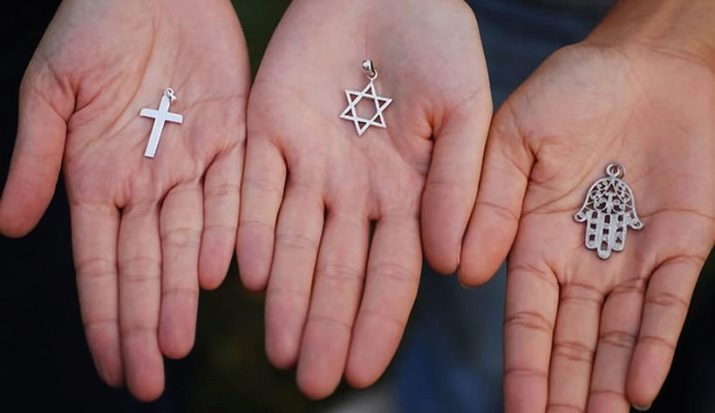
Sacrament history
According to the biblical scriptures, the first people to be married before God were Adam and Eve. A clear description in the Old Testament cannot be found, but everything indicates that there were two rites: the betrothal rite and the wedding or wedding ceremony. Almost all believers had such a scenario: Jews, Greeks, Romans, and then, when Christianity came to Russian land, this ceremony was carried out in Russia.
The New Testament very clearly describes a church marriage, in which the combination of two people is to be blessed by a bishop. Since the 15th century, they began to invite a priest to the wedding, who read a prayer in order to consecrate the marriage. But later, these two events: a wedding and a table celebration, began to differentiate, and the sacrament of the wedding was carried out exclusively in the church.
Tsarist Russia endowed church marriage with legal force. The wedding ceremony always took place in front of witnesses or guarantors. But it was not always so. Until the 17th century, Russia knew only about public weddings. In those days, the care of the family was entrusted to the good spirits that were found in the forests. Therefore, during the wedding, the young were taken around some bush and tree. Also, the Slavic rite included bandaging hands, offering a ring and other jewelry, eating one food or drink.
The scenario of a wedding before Peter I vaguely resembles a modern rite. The young ones walked through the threshold of the church, holding on to a kerchief, blowing out the candles at the same time. Just as now, they stood on a towel in the middle of the room, the priest threw a handkerchief on the tied hands of the young, and at that time they made a round.
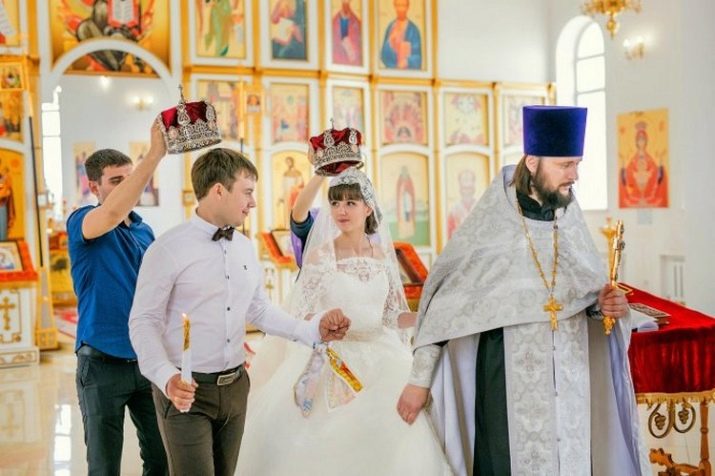
Well, after Peter I commanded that only that marriage be considered legal that was concluded by the church, all the Orthodox learned about the church marriage. The ceremony itself is not very different from the modern wedding ceremony. True, the presence of young parents is now allowed, while Peter I, under pain of terrible punishment, forbade parents to enter the church at the time of the wedding of the couple.
When describing wedding ceremonies in Russia in the 18th-19th centuries, attention should be paid to royal weddings. The decoration of the church during the wedding of distinguished persons was accomplished in an incredible way. The rich decoration of the temples, the splendor of luxury and the clothes of the priests inspired the idea that kings were competing with God. The road from the house to the temple was covered with a carpet of all kinds of flowers, and at the time of the wedding, the servants were already decorating the corteges with shiny ribbons, bells and wildflowers.
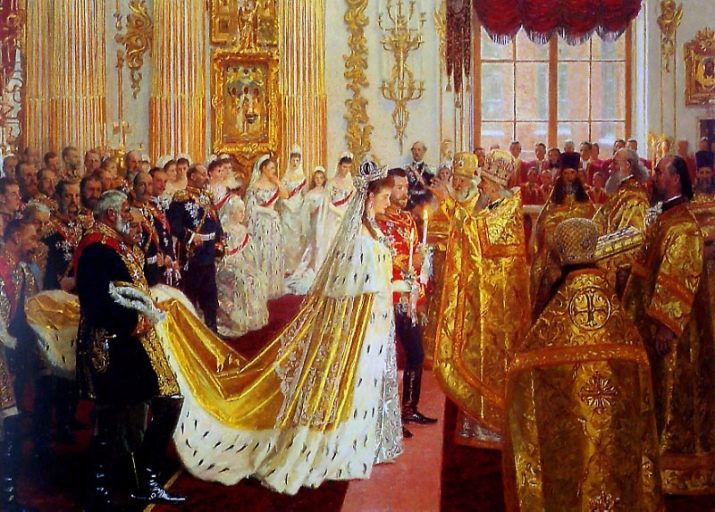
During the arrival of Soviet power, the registration of an official marriage was undertaken by the registry office.The church rite began to be forgotten, but the state did not recognize it and was persecuted. People who entered into church marriages were fired from organizations, expelled from the Komsomol. There were very few believers, as well as those who wanted to get married, and even if the wedding ceremony was carried out, the family kept this information secret in order to exclude negativity in their own direction and in the direction of their children, raised by Soviet teachers.
After the collapse of the USSR, the state again turned its face to the church. Sunday services, communion trips and child baptism began to revive. The wedding ceremony again became something lofty and sacred for the Russians. Weddings in modern Russia have taken their place in Russian families. Newlyweds increasingly want not only to register their marriage in official bodies, but also to ask the Lord to unite them in a holy church marriage, which cannot be destroyed by anyone or anything.
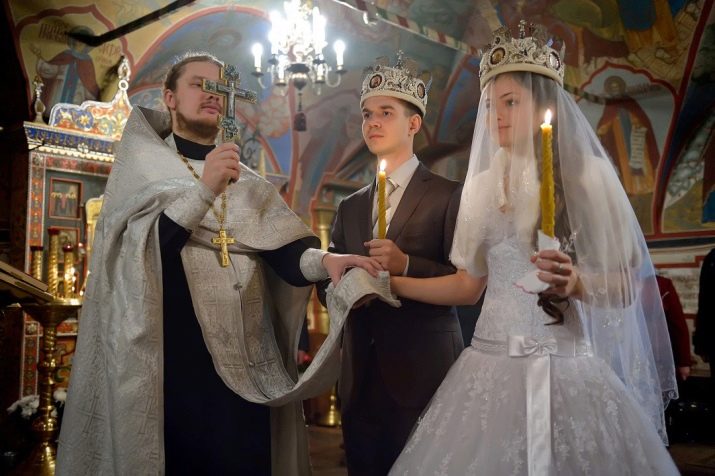
How many times can you get married?
Of course, the wedding process itself should be carried out only once and for a lifetime. But there are times when a debunking ritual is carried out, but for this something very serious must happen. In this case, the excuses that the husband and wife are tired of each other are not at all suitable. A spouse's betrayal can be a serious reason for debunking.

The Church does not approve and does not support the decision to debunk, because it considers the wedding ritual thoughtful and conscious on the part of both spouses. But now young people perceive this ceremony as something stylish and thematic, but not serious at all. Young people do not think in advance why spouses need it so much. Therefore, when deciding on the possibility of a wedding, it should be discussed with both the parents and the priest.
It often happens when a young couple comes for an interview for the wedding ceremony and then leaves, abandoning it. And this is correct, because it is better to conclude a church marriage when a person is tested by time and God.
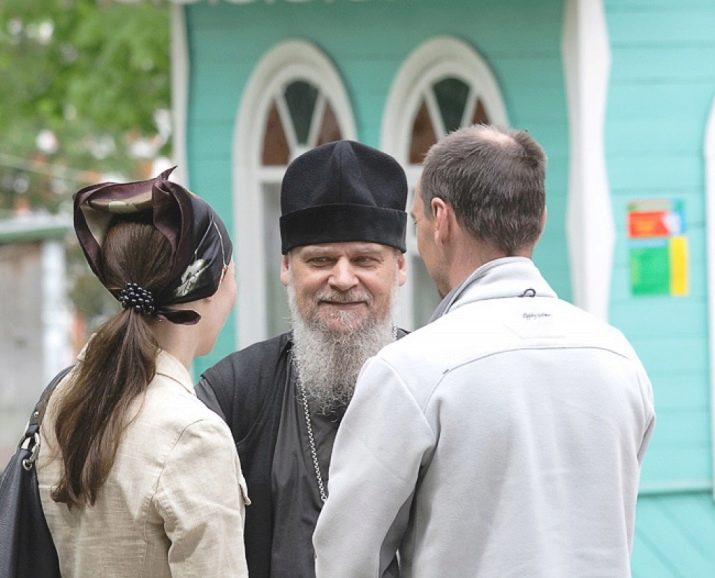
Permission for a second wedding is given only by the ruling bishop. He can permit this if he sees that a person is weak and cannot restrain his carnal desires. Re-weddings are also allowed for people who are not divorced of their own free will, and widowers who are left with a small child. A repeated wedding excommunicates a parishioner from communion for 2 years, and a third marriage excommunicates him for 5 years from the opportunity to receive communion.
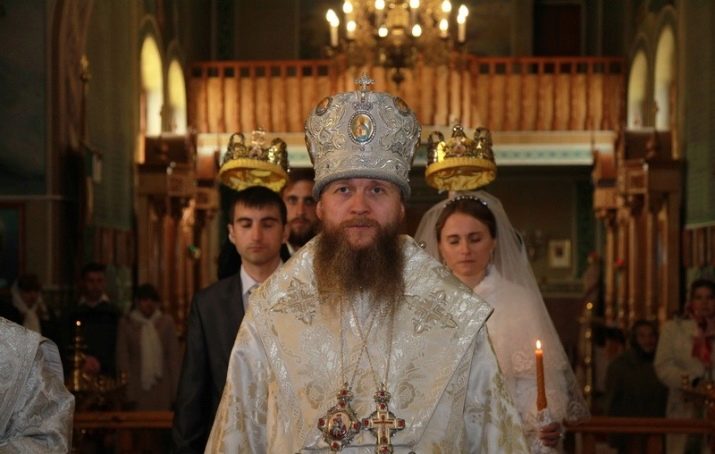
In the second marriage, the couple, in addition to prayers for a joyful event, will hear prayers and repentance for not observing the norms of the church in the previous marriage. The third marriage is an exception to the rule and is only a pacification of a person's fleshly desires.
In total, the number of weddings for one believer, Orthodox person cannot exceed three times in a lifetime. The fourth marriage is prohibited by all the norms and canons of the church.
The church took a long time to decide whether to put crowns on the heads of those who are remarried or not. In the end, she still allowed to marry re-marrying. If a widower and a widow are married, then the crowns are held on their shoulders. The third marriage does not allow the use of crowns during the ceremony.
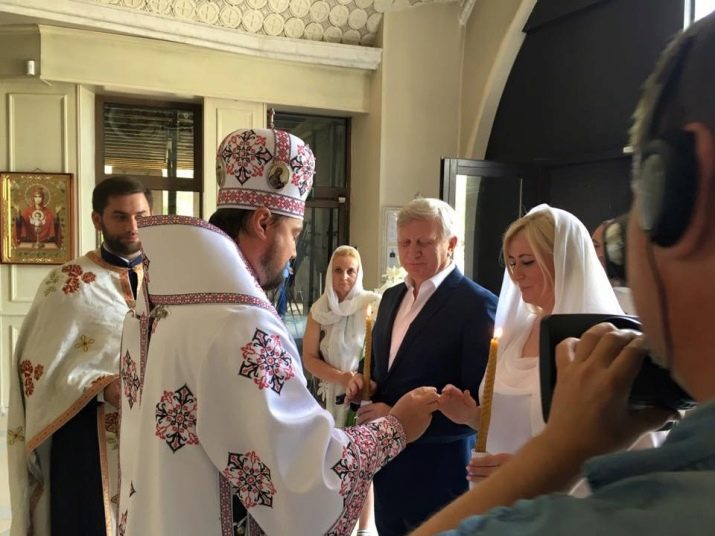
How to choose the time for the ceremony?
The time of the year for the wedding is chosen by the young themselves. They must decide for themselves what season suits them best. There are many superstitions and will accept at this point, but if a person is superstitious, this raises the question of whether he is Orthodox. Therefore, you should not devote time to finding the happiest day for the ceremony, since no horoscopes will help if the young are simply not ready for this serious step.
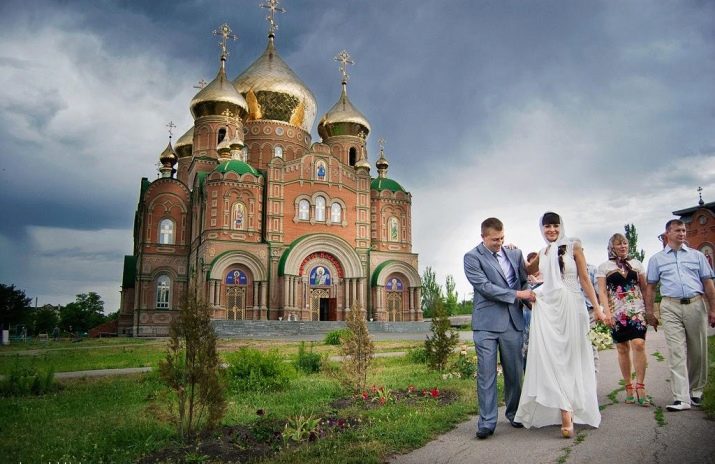
A woman, in particular, needs to guess the day when she will be "clean", since during menstruation, the entrance to the church is prohibited. As for this moment, there are both those who disagree with the ban on entering the temple, and ardent opponents of a woman's visit to the church during bleeding.
Nowadays there are priests who allow a woman to stay in the temple during her period.They say that the woman is not to blame for this, and cannot physically influence this process. In the church, the ministers should think first about her soul, and also respect the desire of the spouses. Based on such an argument, there should be no ban on the wedding ceremony if the young people firmly decided to seal themselves by the bonds of church marriage.

But more often than not all priests are so loyal, so you need to go to your priest and ask in person. In particular, this question may arise for a girl who finds it difficult to track her menstrual cycle and correctly appoint the time of the wedding at the moment when she will be "clean".
As for specific days of the week, you can choose any day except Tuesday, Thursday and Saturday. Usually the sacrament of the wedding is performed after the Divine Liturgy, around 11 o'clock in the afternoon. Fasting is also a ban on the wedding ceremony. For example, Christmas, Assumption and Great Lent.
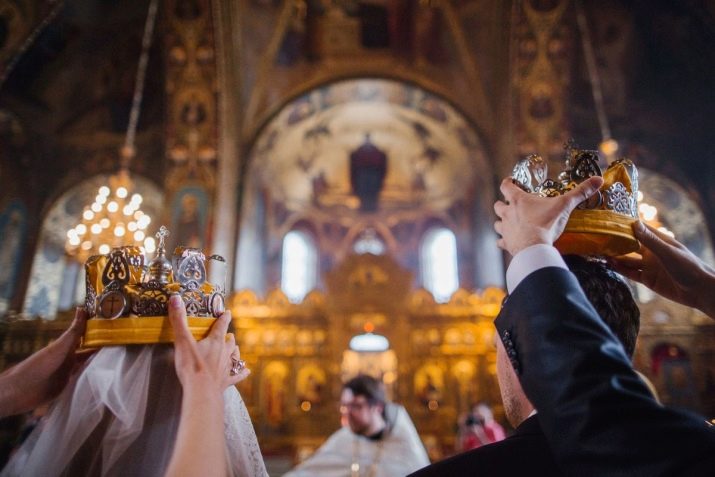
How to Prepare?
First of all, you need to choose a church. To do this, you need to know what kind of ceremony the young people want. You can choose a large beautiful temple and invite many guests. But if only young people and their assistants are present at the ceremony, then a small church will be fine. And, in general, it is worth traveling, seeing and feeling in which church the young will be more comfortable.

When choosing a church, you should also pay attention to the fact that the duration of the procedure is different. If we consider the metropolis, in which there are many beautiful temples, then you need to know that the influx of people who wish there is always considerable. Therefore, if the young people decide to get married in such a place, then, perhaps, there will be several couples during the wedding, and the procedure itself will take about 20 minutes, since the priest may skip some texts.
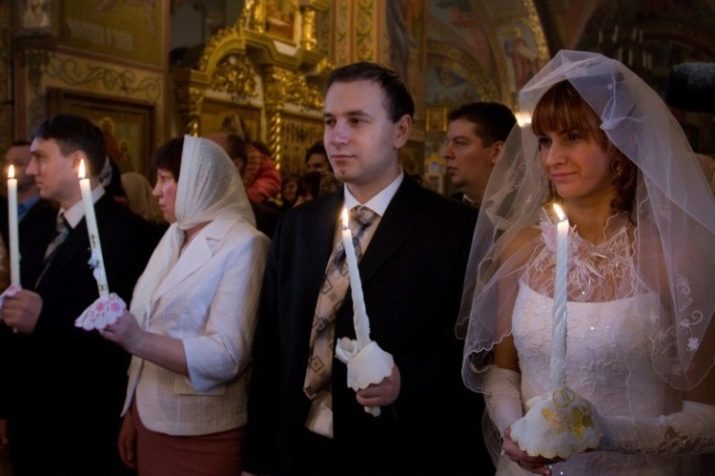
If this option does not suit you, you need to go out of town. There are fewer people there, and the scenario according to which the ceremony is carried out is the same, and even longer, about 1.5 hours, since the priest will not be in a hurry and will do everything as befits the primordially Russian wedding ceremony.
Having chosen the date of the celebration, it is worth discussing it with the priest, as well as ask him about the cost of the service and the possibility of photographing and filming. Filming is not permitted in all temples, or it is allowed to do so only in certain places. Most often, the lighting in the church is not very good, and therefore a photography specialist must arrive at the site in advance and pick up the necessary accessories for the work so that the photographs turn out to be perfect.
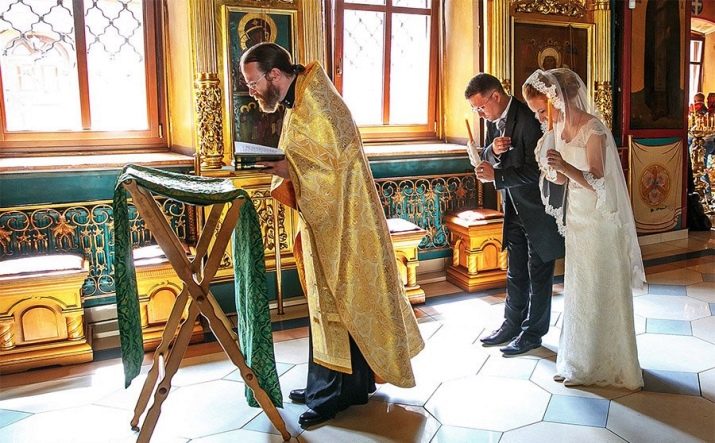
For a couple, it is better if only she is married on the day of the ceremony. The priest may say that this is just superstition, but it is still desirable for only one couple to be present on that day.
The wedding rite of marriage involves ringing the bell at the end of the ceremony, so it is worth agreeing about this with the priest. You can even make some kind of donation to the church if the priest does not immediately agree. Bells alert the angels of a new family, and they pray for the health and happiness of the family and future children.

If the decision on the wedding does not leave the young, and they at all costs decided to seal themselves by the bonds of church marriage, then they need to know how to properly prepare for this ceremony: what to take with them and what to give to the priest on the eve of the celebration.
Witnesses are optional. If the young people decided that they could not cope without help, then Orthodox baptized people who are married should be chosen as guarantors.
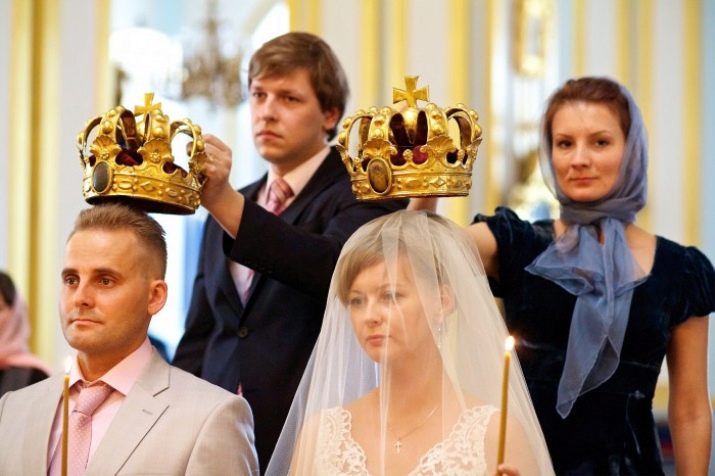
It is also necessary to find out what exactly the witnesses are supposed to do. If they hold crowns (and not in all churches witnesses do this), then it will be necessary to choose a witness for themselves in height, since it will be very problematic for a small woman to hold a crown over the head of a tall girl.
It is also necessary to fulfill a number of church prescriptions.
- Communion is a mandatory procedure before the wedding. To do this, you must fast for at least 3 days.
- You cannot eat or drink 12 hours before the start of the celebration.
- Before communion, you need to say prayers to Jesus Christ, the Mother of God and the Guardian Angel, as well as follow. You can buy a prayer book in the temple.
- Wedding rings - those that will be in the hands of the young, must be bought in advance, and on the eve of the wedding they must be handed over to the priest so that he blesses them.
- For the ceremony, they also buy a towel (an embroidered towel), two tall white wedding candles, icons of the Mother of God and the Savior, and small handkerchiefs for candles to avoid getting wax on your hands.
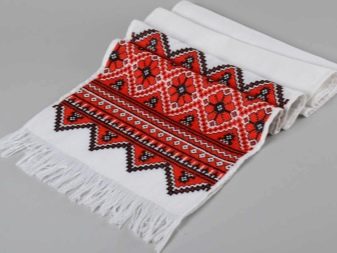

- Wedding preparations can also eliminate alcohol and cigarette consumption 12 hours before the event.
- Do not forget about the official marriage registration document in the registry office.

As for the rings, there are two versions to determine the choice of metal from which they are made, and they absolutely contradict each other.
One of them says that the groom is put on a silver ring (in ancient times it was completely iron), and the bride - a gold one. The rings were a reminder: to the wife - of the sun-husband, and to the husband, the silver ring with its silver shine reminded of the sedate moon that was always walking behind the sun. And the version that contradicts the first is that the wife's ring, on the contrary, should be made of silver, and the husband's - of gold. This version of the selection of rings is explained by the fact that gold personifies Christ, and silver - the purity of the church, as well as the purity and chastity of the wife. The choice of accessories always remains with the young.
Rings are chosen to be smooth and simple so that the life of the young together is smooth.
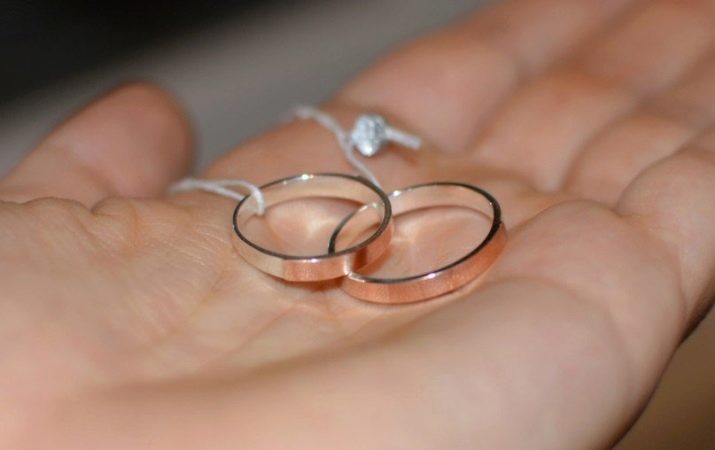
Outfit features
For a church celebration, it is necessary to choose the right dress for the bride, since the image of the groom is quite understandable and standard. The only things that are not allowed for the male look are sneakers and jeans. In all other respects - complete freedom of imagination, but the look of the groom must be appropriate and serious.
If the wedding and the wedding take place on the same day, then those girls who choose an open dress with a deep neckline, bare back and shoulders for both ceremonies are very thoughtless. This view is absolutely not permissible for a bride in a church during a wedding. A non-fluffy straight-cut dress with elbow-length sleeves and not very high heels would be appropriate. The latter condition rather simplifies the stay of the bride in the church, rather than a requirement for her appearance. The time spent in church during the wedding ceremony is 1 hour or longer, so it will be very uncomfortable to stand in high heels for an hour.
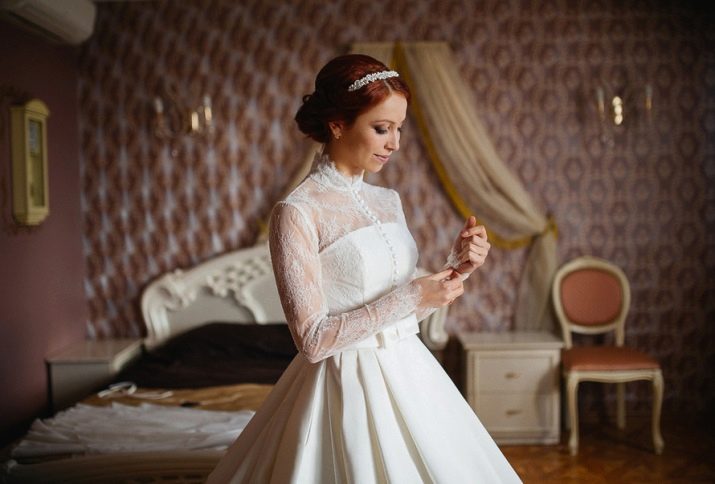
Due to such requirements, these two events are desirable: a wedding and a wedding, not to arrange on the same day, in order to comply with all the rules of the wedding and look dignified by participating in the ceremony.
During the procession, you can cover your head with a veil, but it is undesirable to cover your face with it, since the bride must be open to God. The color of the dress can be any, but you need the shade to be light and pale. White is ideal for a bridesmaid dress. The rules do not say anything about jewelry, but moderation and modesty are encouraged.
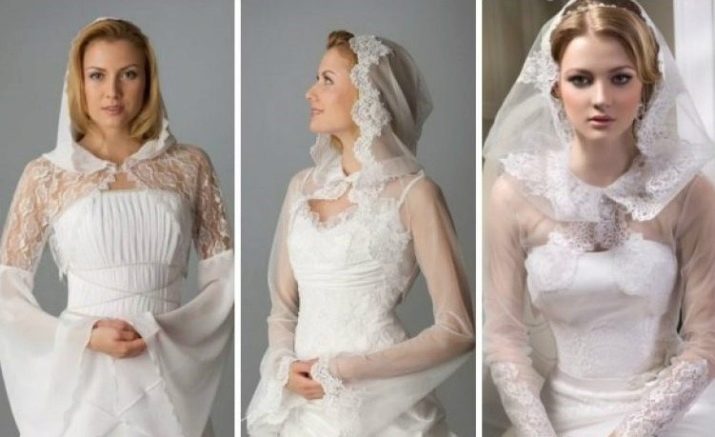
Regarding the bride's makeup, they say that he, too, should be quite restrained, and it should be borne in mind that kissing the cross with lips painted with lipstick that gets dirty is not allowed. In this case, it is worth choosing cosmetics that do not leave marks.
It should be noted that in no case should you sell a wedding dress. For storage, it is put in a closet next to the baptismal clothes. This dress can be worn in the office if it is not too formal. A wedding dress is sometimes left as a legacy to a daughter as a reminder of her parents and the fact that they lived in a blessed, Orthodox family. And of course, the dress should not be thrown away, cut, since it should remain as a memory of the solemn day when the marriage of two hearts was gifted with the love of God.

Any woman takes care of her hairstyle, so before doing it, it is worth asking the priest if crowns are put on the heads of the spouses.
If, besides the young, other guests will be present at the ceremony, then they should not forget about the rules that exist in the church. For example, it is not permissible for women to wear trousers to church. The heads of female guests must be covered. All those present must have their pectoral crosses with them.
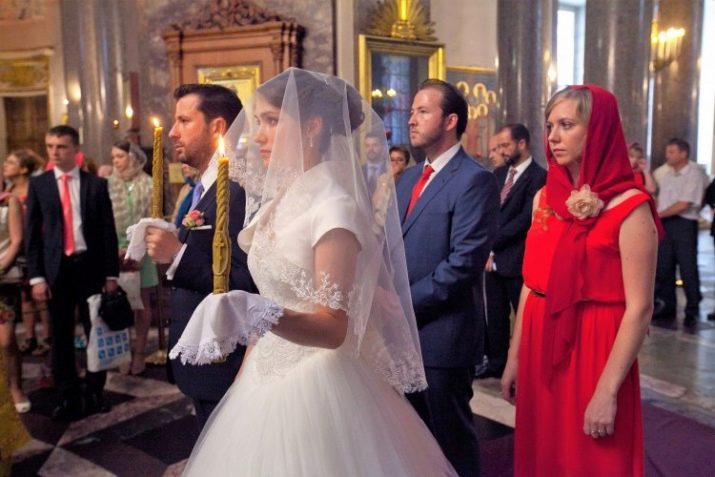
How is the ceremony going?
Not everyone knows about the rules of the ceremony. Many spouses simply do not see a reason to find out in advance what and what should be followed, what prayers should be known, when to be baptized, kiss the image or venerate it. Some don't even know how to get baptized properly. In this case, it is advised to initially read the relevant literature so as not to look stupid during the wedding. But fortunately, only those who have attended church more than once, received communion and confessed are mainly decided and go to the wedding.
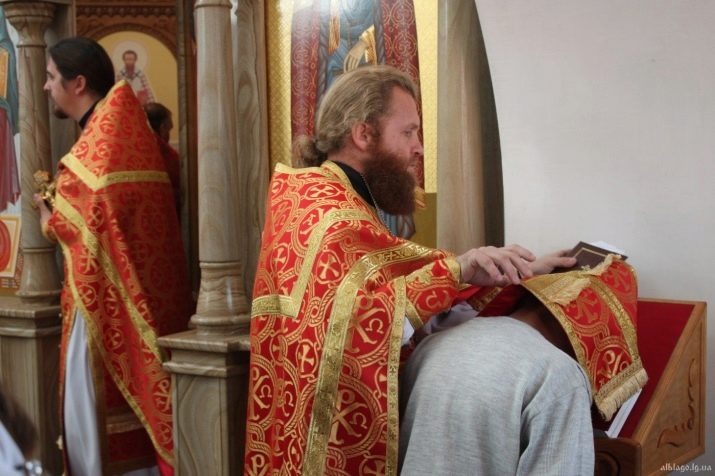
The church wedding ceremony itself consists of two stages: betrothal and wedding. If the spouses were baptized at birth with a different name, then this should be reported to the priest.
Betrothal is the moment the husband accepts the wife from the Lord. By introducing the couple into the temple, the priest by this action marks the beginning and birth of a new family. After the priest has brought the couple into the temple, he baptizes them and hands them lighted candles, which symbolize the ardent and strong love of the young for each other.
Next, the priest praises God, and then he prays for the young on behalf of each guest present in the temple. In his prayers, he talks about the purpose of marriage - procreation. Father also asks the Lord for the blessing of the spouses for good deeds.
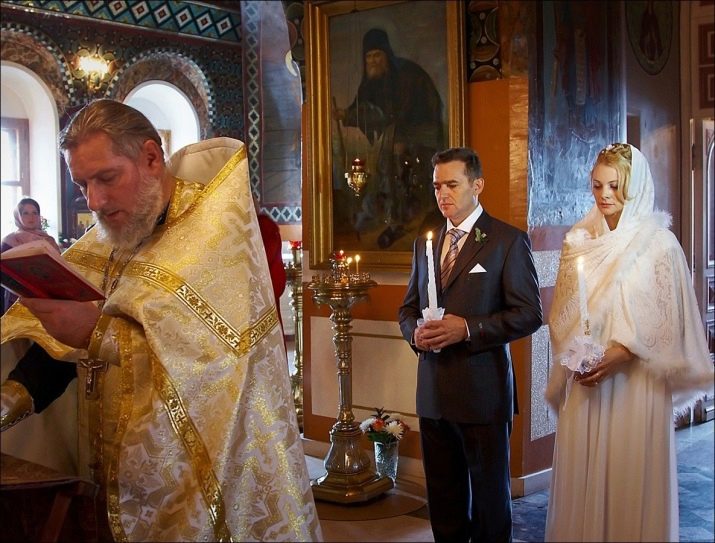
Then rings are put on the fingers of the young - first on the finger of the husband, then on the wife. The ring is a symbol of the inextricable connection of two people, and, thus, he says that the union, which takes place in front of God between two people, becomes inseparable. After that, the young change rings three times. So the husband's ring remains on the wife's finger. This means that throughout his life together, he pledges to help his wife, support her and sacrifice everything for her. The wife's ring on her husband's finger speaks of her eternal obedience, immeasurable love and willingness to accept sacrifices.
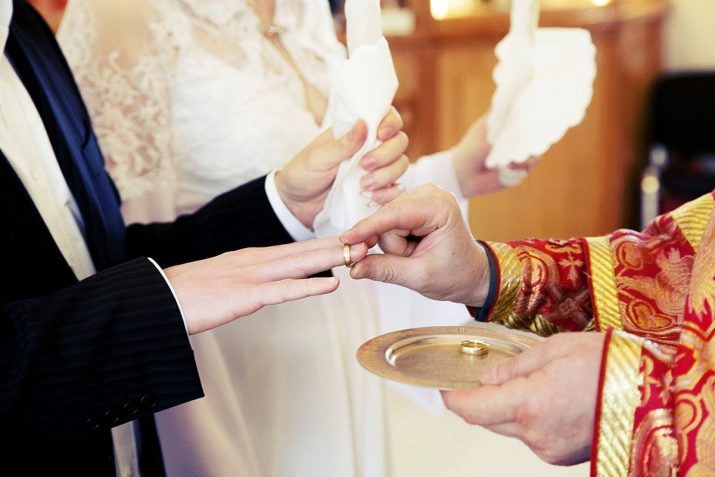
The next stage is the wedding. The young are led into the center of the temple, and they step on the towel spread in front of the analogue. They express their consent to enter into a Church marriage. The spouses also confirm that they are not bound by any promises with outsiders, and after fulfilling this condition, the natural marriage is considered concluded.
Then the marriage is sanctified by Divine grace, and this action begins with the liturgy. The priest reads three prayers to God, in which he asks to bless the marriage, to give them children.
After that comes the most solemn moment - the laying of crowns on the heads of the young. Having baptized the husband, the priest allows him to venerate the image of Christ, and in the same way the wife applies to the image of the Mother of God on her crown. The priest three times asks the Lord himself to marry the young, and on behalf of God blesses the couple for the marriage. This is the most solemn moment of the emergence of a new Christian family. Then the priest reads the Gospel, and then, together with the young people and the guests, he sings "Our Father". After that, the priest gives three sips of wine, first to the husband, and then to the wife.
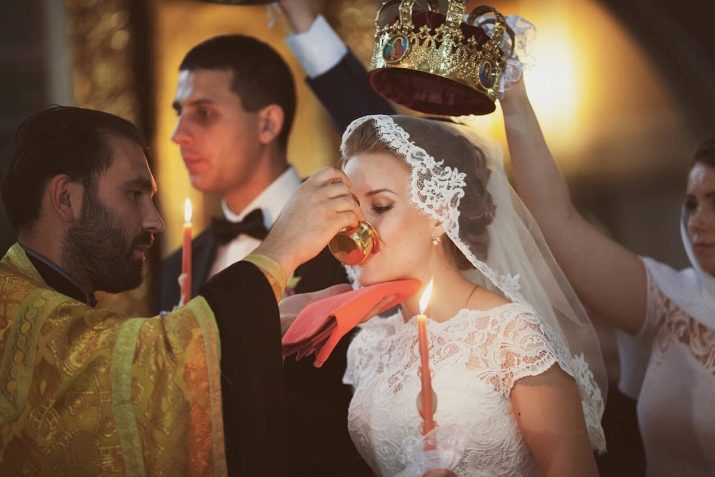
Then he joins the hands of the husband and wife, covering them with an epitrachilus and putting his hand down, signifying the transfer of the wife to the husband from the Church, which unites the young in Christ. The three-fold walk around the lectern is accompanied by the reading of three troparions about the glorification of Christ. This move marks the eternal march of the young through life hand in hand.
After the prayers, the couple seals their bond with a chaste kiss. Approaching the Royal Doors, the bride kisses the image of the Mother of God, and the husband - the image of Christ.Then they change and apply to the images of the Mother of God and the Savior.
After the ceremony, young people usually go home or to their parents to celebrate a happy event for the family. It is important on this day to maintain humility and meekness, and therefore you should not call noisy companies, there are enough 3-5 closest people with whom you want to share your joy on this day.
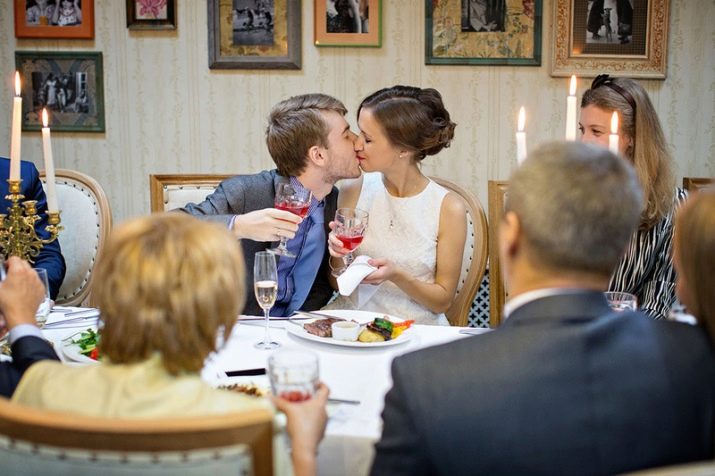
Signs and superstitions
Many couples, having decided to get married, begin to look for information about the signs associated with this sacrament. And they really are, since wedding is a very old custom, and during its long, centuries-old history, it has gathered many beliefs around itself. The priests try to explain to the young that there is no semantic meaning in omens. Signs are groundless, mostly far-fetched, and are the product of people's imaginations. Nevertheless, modern girls still believe in omens, try to observe them, and notice every little thing that may indicate the outcome of the wedding.
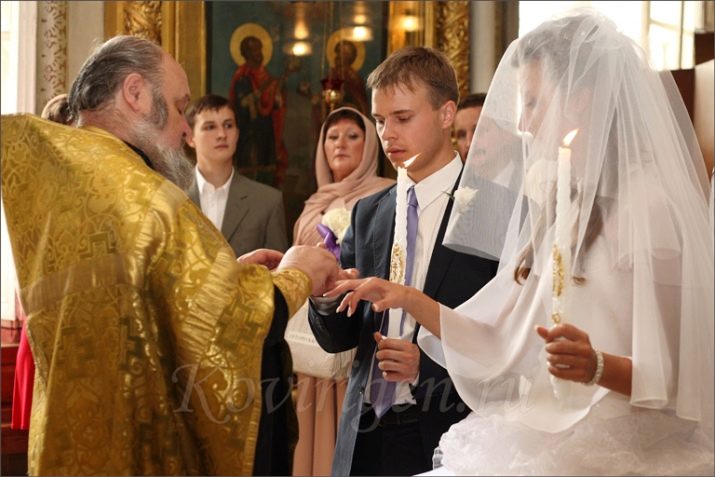
It is believed that the best time for a wedding is the last day of the first week after the end of Lent, or the so-called Red Hill. And this fact is rather contradictory, since Krasnaya Gorka is actually a pagan holiday, and it has nothing to do with the church. It was celebrated by the Slavs as the end of spring and the birth of a new life.
At this time, young people met on the hill, sang songs and made acquaintances. In this regard, Krasnaya Gorka is also symbolized with the birth of a new family. After that, it was believed that a wedding on this day marks a happy marriage and a long happy life for the couple.

Other signs of a wedding begin already on the threshold of the bride's house.
- After the young people left for the temple, they washed the floor in the bride's house so that she would never return to her parents.
- Hot stuffy weather is not the most favorable omen, which is why the couple considers autumn or spring to be the best time for a wedding.
- You can not cross the road for a couple who are going to get married.
- In order for a couple to live happily in marriage, you need to put an open lock under the threshold, and after the couple steps over it, close it, throw out the key, and leave the lock young.
- A couple must go to the solemn ceremony of a church marriage healthy, otherwise they can get married with their diseases and not be cured of them.
- If, before the wedding ceremony, you make an oath to each other in eternal love and fidelity, standing at the well, then the marriage of the young will be indestructible.
- You cannot call each other by name on the way to church, otherwise the couple will conflict a lot.
- Bad omens are weather factors. If a blizzard and storm breaks out, it will be a bad omen, and the wedding will not go very smoothly.

Many legends are also associated with rings, and it will also take superstitions.
- In Russia, since ancient times, it was believed that rings did not need to be worn at all. The husband's gold ring was given to the wife for safekeeping, and the wife's silver ring to the husband.
- If there is a carving on the ring, then it is to the bumps on the road of life, and the stones on the ring are tears.
- Only two people need to buy rings.
- You can't buy rings in a hurry. It is recommended to take care of the purchase at least a week before the event.
- Rings should be sized to fit, not small or large. It is highly discouraged to alter them to fit your size, as well as to use jewelry of your parents or relatives to make rings.
- For weddings, rings from past marriages are not used.
- Wedding rings cannot be worn on gloves, so they must be removed before the ceremony.
- You cannot divide the budget for the purchase of rings and it is necessary that both rings are bought by the husband, so that there are no disagreements in the family.
- Rings should not be shown or allowed to be measured by another person. Otherwise, one of the spouses will turn out to be a traitor.
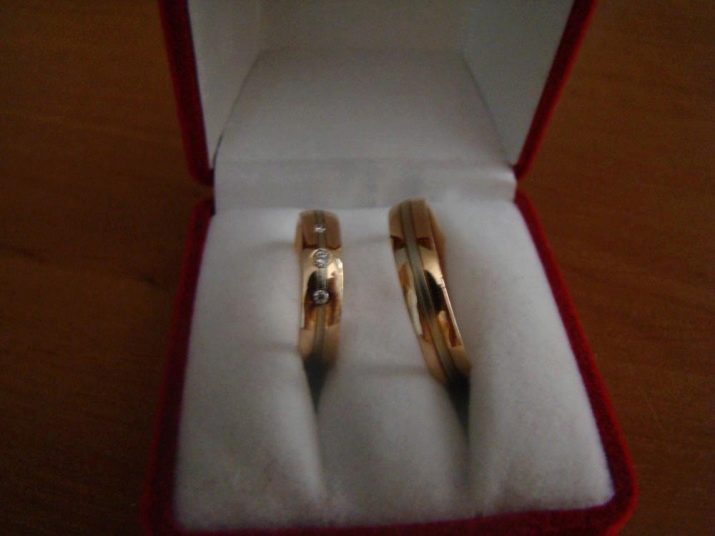
Superstitions touched not only the rings, but also the clothes of the young.
- If, on the eve of the wedding, a button or some element of clothing comes off the dress, then this is in trouble.
- Young people need to pin pins on their clothes against the evil eye.
- You cannot wear a wedding dress until the wedding itself - there will be no wedding.
- The bride's wedding dress should be one piece, not divided into a corset and a tutu or skirt. Observing this sign, the bride protects herself from divorce from her husband.
- On wedding dresses, the number of buttons must be even, otherwise the spouse will be cheated.
- Flowers in hair without a veil and other covering promise an imminent break in relations.
- You cannot come to the wedding ceremony in open-toed shoes.
- The wreath on the hair of the bride at the wedding ceremony looks very cute, but it will not bring her happiness, she will quickly become lonely and unhappy.
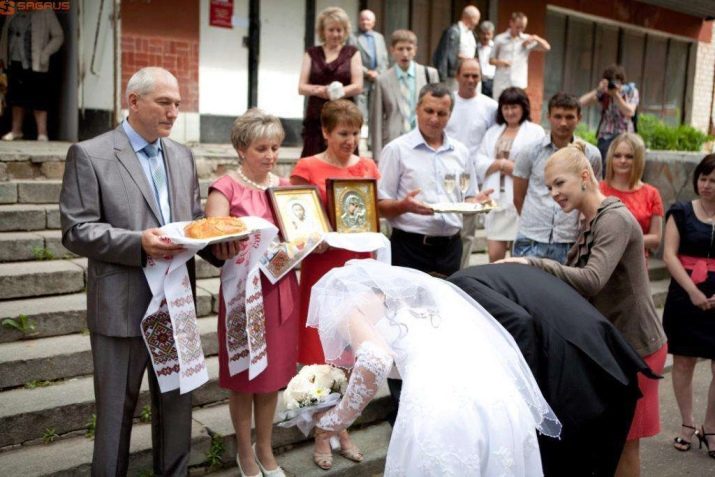
Seeing the young people off to church and the ceremony itself also became overgrown with a web of legends and signs.
- Children are blessed by parents with icons of the Mother of God and the Savior. If in gratitude the young people bowed synchronously, then the marriage will be long.
- Young people should enter the temple on the right foot.
- At the entrance to the temple, the witness of the ceremony must lay a towel under the feet of the young, whoever steps on it first will be considered the head of the family.
- The couple is given wedding candles, which after the ceremony, like the towel, must be taken away. Candles can be lit during illness.
- During the ceremony, when crowns are put on the young people, they do not look into each other's eyes. The gaze should be directed at the priest conducting the wedding ceremony.
- If, after the wedding, rain falls from the sky, a rainbow comes out, this will mean a long life together in joy and harmony.
- After the ceremony, it is necessary to return by a different road, and not the one along which the young went to church.
- Crowns, contrary to popular belief, should be worn on the heads of the spouses. Otherwise, such a church marriage is invalid.
- If the candles crack, then the marriage will be unstable.
- Whose candle burns longer during the ceremony, that spouse will live longer.
- The rain that fell during the procession promises the imminent wealth of the young.
- In Russia there was such a belief that before going to bed, wedding rings along with wine were dropped into the wedding cups. Only after drinking the cup was intimacy possible.
- After the wedding ceremony, you need to look with your spouse in one mirror. After that, the marriage will be happy.
Now, due to the fact that weddings are often celebrated together with a wedding celebration, young people after the wedding and the wedding ceremony go for a ride, take pictures in parks and squares. But this is believed to be wrong. After the wedding, you need to go home so as not to lose the grace and happiness that they found in the church. On a walk, the bride can catch an unkind eye from passers-by who are unhappy, often the young or both spouses can be jinxed, and therefore, if it is impossible to go straight to the parents, it is worth taking care of protection from the evil eye and bad thoughts.
Young people often donate money after the wedding. There is also a sign of making a ritual gift to the church in gratitude for the sacrament. Fresh bread wrapped in a snow-white cloth or towel is a traditional gift.
For the essence of the wedding ceremony, see the next video.








